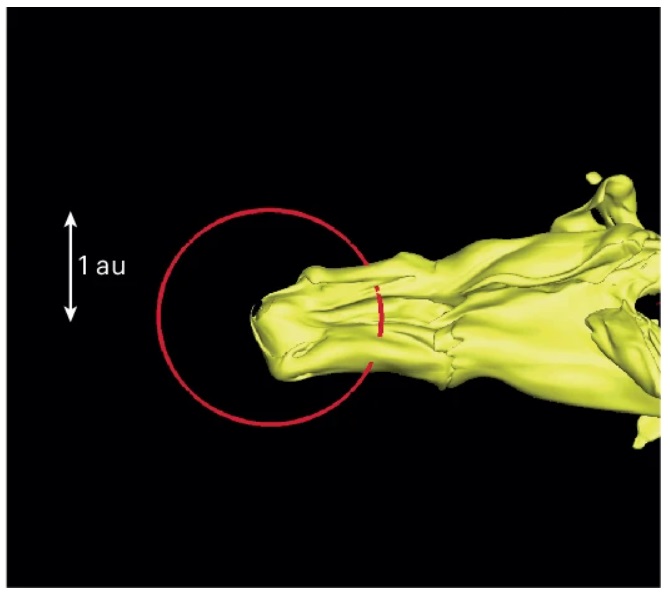Did Earth once lose its protective bubble?
Earth rides through our home galaxy, the Milky Way, inside a protective bubble around our sun. Scientists call this bubble the heliosphere. It’s essentially a cavity surrounding our local star, protecting our planet (and us) from the stronger radiation in the surrounding interstellar medium. But on June 10, 2024, a team of scientists said that, approximately 2 million years ago, the heliosphere might have shrunk. Earth might have been more directly exposed to the interstellar medium. These conditions might have left traces of heavier metals on Earth and could have cooled our climate for a time.
The culprit, the scientists said, was a cold cloud in space, made mostly of hydrogen atoms. That cloud crossed paths with our solar system. In fact, this cloud might have been so dense that it buffeted away the sun’s protective bubble.
The team published its peer-reviewed paper in Nature Astronomy on June 10, 2024.
Location, location, location
Earth has gone through numerous ice ages, including the recent one we humans most often think of as the Ice Age. It happened during the Pleistocene period, some 2.6 million to a mere 11,700 years ago. To be sure, scientists have proposed many factors that might have contributed to earthly ice ages. But now, a team of scientists led by Merav Opher of Boston University has proposed another puzzle piece.
These researchers believe it was the sun’s location in our Milky Way galaxy that could also have contributed to the last earthly ice age. As our solar system encountered the interstellar cloud – and the bubble shrunk – the planets were exposed to the harsher conditions beyond the protective heliosphere. Opher said:
Stars move, and now this paper is showing not only that they move, but they encounter drastic changes.
Computer modeling the history of Earth
The scientists used computer modeling to look back in time and see where our solar system was in the past. In addition, the modeling also included something called the Local Ribbon of Cold Clouds system. This structure is a strand of immense, dense and super cold clouds made mostly of hydrogen atoms. And one of these clouds – the Local Lynx of Cold Cloud, near the end of the strand – might have collided with our solar system.
If that happened, then the sun’s protective bubble would have compressed and shrunk. Indeed, without the sun’s protective bubble, Earth and the other planets would have been exposed to radioactive particles. The particles are the leftovers of exploded stars, like iron and plutonium. In their paper, the researchers said increased amounts of isotopes of iron and plutonium in the geologic record align with this time period. Scientists have found these isotopes in Antarctic snow, ice cores … and on the moon.
The scientists said this exposure could have lasted from a couple hundred to a million years before the return of the protective bubble we live in today. Opher said:
This paper is the first to quantitatively show there was an encounter between the sun and something outside of the solar system that would have affected Earth’s climate.

More clouds in our future
With this in mind, the scientists said it’s not possible to know exactly what effect a cold cloud would have had on our solar system. But Earth has likely encountered others in the past and will do so again in the future.
Now, the team is using data from the Gaia mission to look even farther back into the past. They’re trying to trace the location of the solar system and the cold cloud back 7 million years. Co-author Avi Loeb of Harvard University said:
Only rarely does our cosmic neighborhood beyond the solar system affect life on Earth. It is exciting to discover that our passage through dense clouds a few million years ago could have exposed the Earth to a much-larger flux of cosmic rays and hydrogen atoms. Our results open a new window into the relationship between the evolution of life on Earth and our cosmic neighborhood.
Bottom line: A team of scientists said that about 2 million years ago, the solar system might have collided with a cold cloud of interstellar gas and dust, shrinking the sun’s protective bubble and exposing Earth to space.
Source: A possible direct exposure of the Earth to the cold dense interstellar medium 2–3?Myr ago
Via Boston University